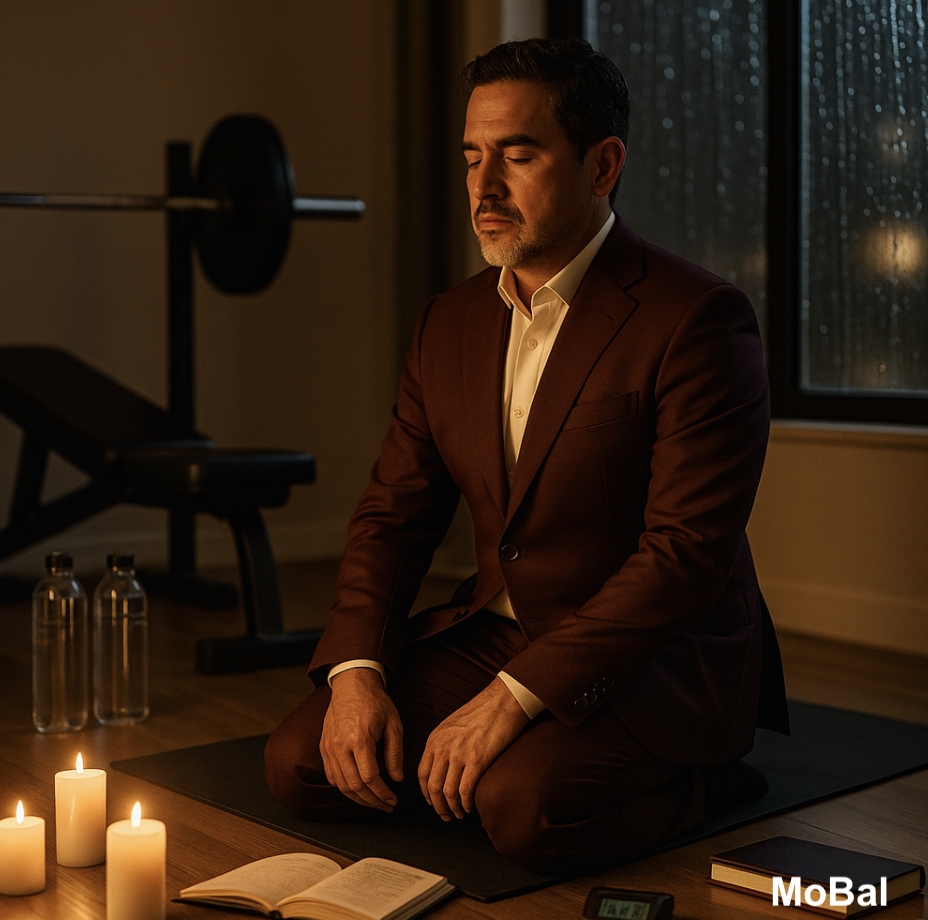
Ritual Is What Survives the Storm
Author: Marvin V Acuna
Ritual Is What Survives the Storm
In a world where chaos reigns, where each day presents a tempest of uncertainties, we dare to stand firm. The path to leadership and mastery is littered with obstacles that test our resilience and commitment. Amidst this turbulence, there is a lighthouse that guides us: ritual. It is the rhythm we create through habits and the structure that anchors us when the world spins beyond our control. The essence of leading your life is rooted in how you harness these rituals and habits to navigate chaos.
The Dance Between Chaos and Structure
As leaders, embracing chaos isn't just an act of bravery; it's a necessity. Chaos brings change, and with change comes growth. However, without structure, chaos becomes a consuming void. Here, our rituals become the choreographed dance steps guiding us through the storm. Each step—each habit—becomes an integral part of a performance that thrives amidst unpredictability.
Building Rituals in Daily Life
To forge these rituals, one must first identify the patterns of disruption in their daily life. These are the moments that unsettle, unnerve, and harness our focus. It is within these gaps that structure must be weaved.
- Morning Mastery: Begin each day with a ritual that grounds you. Whether it's a moment of silence, reflection, or physical exercise, this morning discipline sets the tone for resilience.
- Mindful Intervals: Throughout the day, pause. Inhale deeply, recalibrate, and realign your focus. This practice is a reminder that even in chaos, you control the narrative.
- Evening Reflection: Acknowledge the efforts and accomplishments of the day. This ritual closes the chapter with gratitude and primes the mind for rest and renewal.
Habits as Pillars of Resilience
Habits are the unsung heroes in the narrative of survival. They are the quiet yet powerful pillars that uphold the temple of our consciousness. When cultivated with dedication, habits transform the mundane into extraordinary acts of self-leadership.
Crafting Habits for Leadership
How does one transform daily habits into rituals of leadership? The answer lies in the mindful selection of actions that align with one's core values and aspirations. Here are a few principles to guide this transformation:
- Intentional Design: Choose habits that align with your highest purpose. If your aim is to lead with authenticity, forge habits that nourish integrity and transparency.
- Consistent Execution: Habits cannot be occasional visitors; they must be constant companions. Their power lies in consistency, not prominence.
- Adaptability: As life shifts, so too must your habits. They must be dynamic, evolving with you to serve the fluctuating demands of leadership.
Navigating Chaos with Spartan Discipline
The myth of Spartan warriors is not just one of might, but of disciplined tenacity. In the face of chaos, they stood unwavering, anchored by the rituals that trained body and mind in concerted harmony. As modern leaders, we harness this legacy through disciplined rituals that foster resilience and adaptability.
Harnessing Spartan Principles in Modern Leadership
- Physical Mastery: Just as the Spartans honed their physical abilities, today’s leaders must focus on physical wellness as a form of discipline. Exercise is not merely for health; it is an act of cultivating mental fortitude.
- Mental Agility: While the Spartans were acutely aware of their surroundings, we too must practice mental agility. This involves training the mind to pivot and adapt while maintaining focus on long-term objectives.
- Emotional Equilibrium: Leading with a calm demeanor amidst chaos commands respect and inspires calm in others. Emotional intelligence—and the ability to manage personal emotions and reactions—becomes paramount.
The Legacy of Ritual: Change Your Body, Lead Your Life
"Change Your Body. Lead Your Life." is not just a statement; it's an invocation. It's a reminder that the rituals we cultivate in our physical existence profoundly reflect in our leadership capabilities. As we train our bodies, we harness inner strength to lead by example, inspiring those who follow.
Embodying Leadership Through Physical Change
The discipline of physical mastery imbues a leader with qualities that transcend the physical realm:
- Strength and Tenacity: Physical training shapes a leader who is resilient and can withstand pressure.
- Patience and Perseverance: Building physical endurance requires patience, a trait that also nurtures strategic foresight in leadership.
- Confidence and Poise: Transforming one's physical form leads to self-assuredness—a crucial component in influencing and guiding others.
Conclusion: The Endurance of the Storm’s Architects
In the final measure, rituals inscribe us as architects of endurance. As leaders, we bear the responsibility of designing frameworks within which both chaos and order coexist in elevated harmony. It is the rituals—the everyday habits of resilience—that stand unscathed amidst the storm, illuminating paths not just for us, but for those who choose to follow.
In embracing these rituals, we embrace change. We transform, adapt, and survive not by fighting the storm, but by dancing within its intricate chaos. Thus, the leader doesn't merely endure but thrives, leading self and others to uncharted frontiers with purpose and poise. Lead with your life; change with your body. Through rituals, we don't just weather the storm—we become its master.